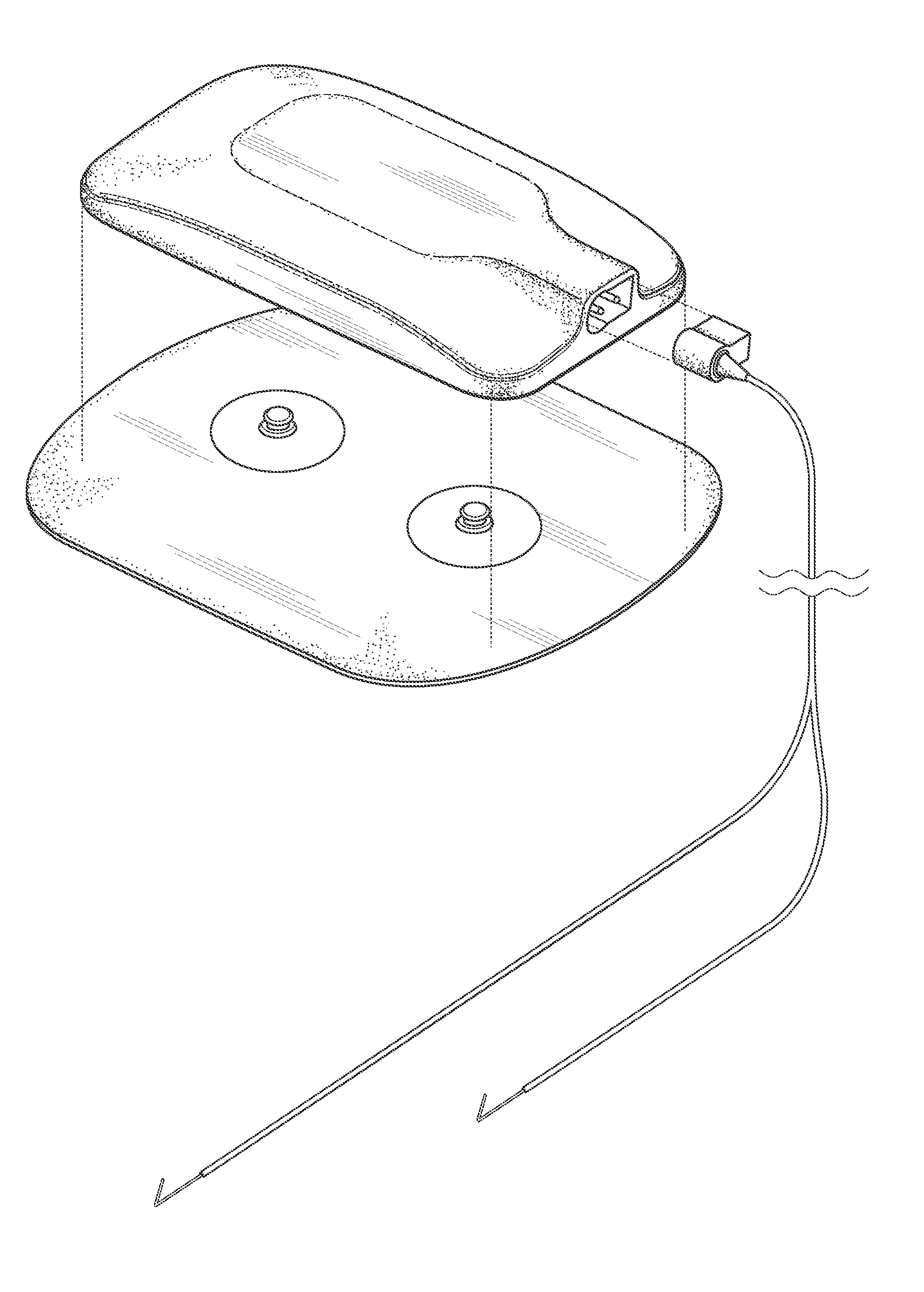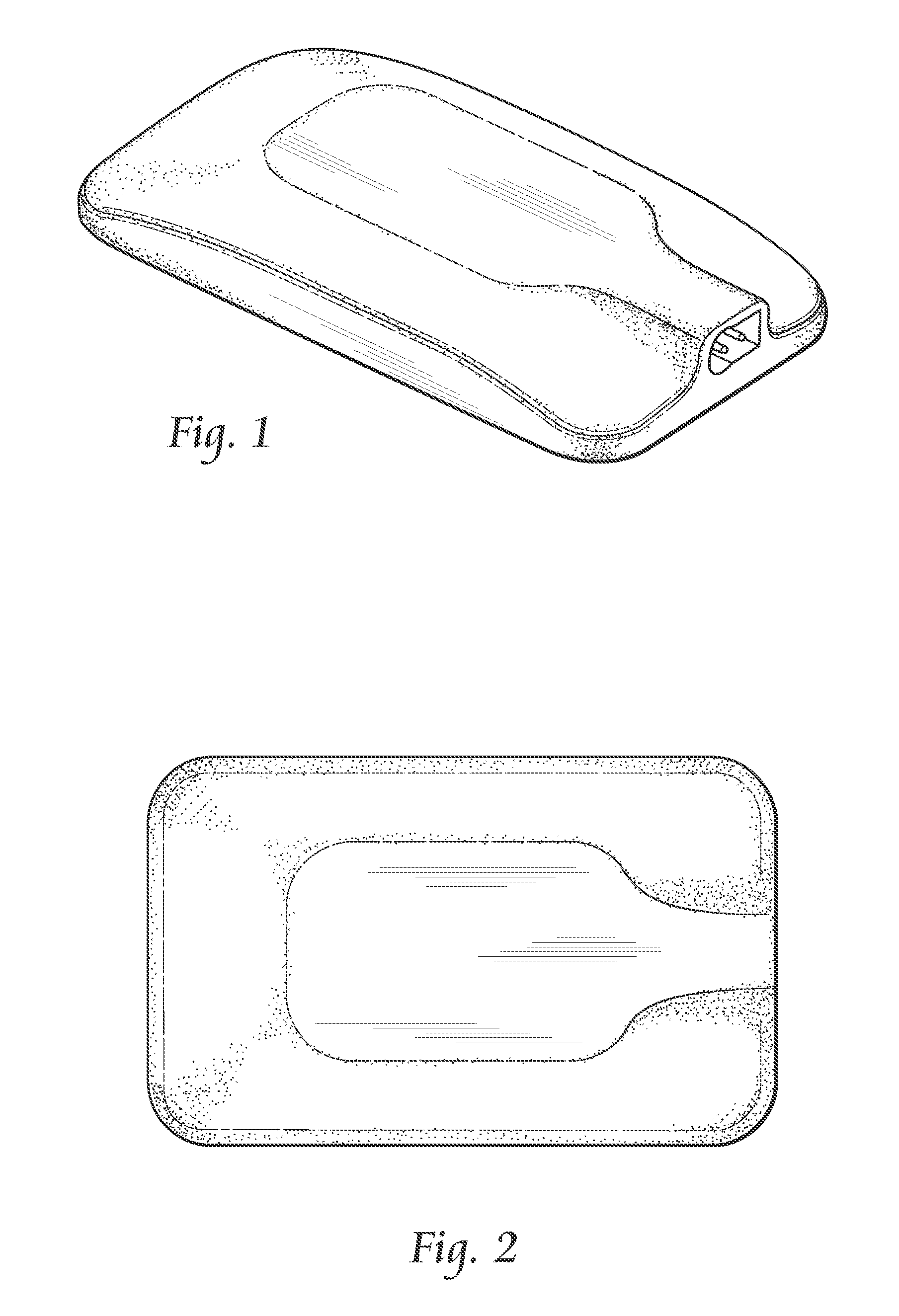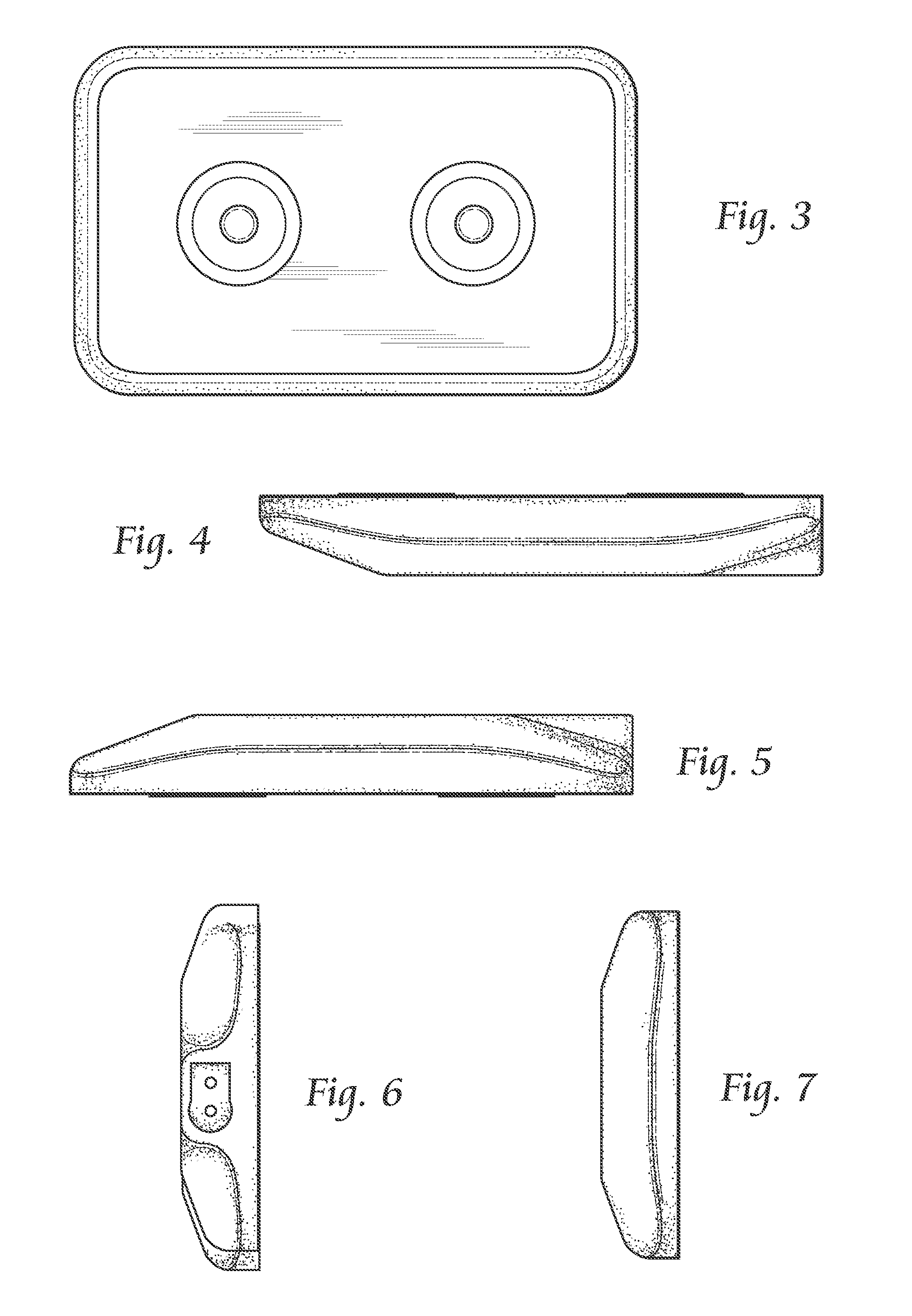Systems and methods for providing percutaneous electrical stimulation
a technology of percutaneous electrical stimulation and percutaneous delivery, applied in the direction of electrotherapy, external electrodes, therapy, etc., can solve the problems of inability to provide effective and minimally invasive treatment options for patients, use of prior available surface stimulators to deliver percutaneous stimulation, and failure to provide effective and minimally invasive treatment options. , to achieve the effect of low cost, low side effects, and low cos
- Summary
- Abstract
- Description
- Claims
- Application Information
AI Technical Summary
Benefits of technology
Problems solved by technology
Method used
Image
Examples
Embodiment Construction
[0024]Although the disclosure hereof is detailed and exact to enable those skilled in the art to practice the invention, the physical embodiments herein disclosed merely exemplify the invention which may be embodied in other specific structures. While the preferred embodiment has been described, the details may be changed without departing from the invention, which is defined by the claims.
[0025]Systems, components, or methods according to the present invention may provide safety improvements, such as electrical safety improvements that may be provided by improved moisture ingress protection.
[0026]Systems, components, or methods according to the present invention may provide stimulation output improvements, such as direct-to-nerve stimulation and current-controlled output.
[0027]Systems, components, or methods according to the present invention may provide stimulation usability improvements, such as decreased physical size, wireless stimulation control, and decreased maintenance requ...
PUM
 Login to View More
Login to View More Abstract
Description
Claims
Application Information
 Login to View More
Login to View More - R&D
- Intellectual Property
- Life Sciences
- Materials
- Tech Scout
- Unparalleled Data Quality
- Higher Quality Content
- 60% Fewer Hallucinations
Browse by: Latest US Patents, China's latest patents, Technical Efficacy Thesaurus, Application Domain, Technology Topic, Popular Technical Reports.
© 2025 PatSnap. All rights reserved.Legal|Privacy policy|Modern Slavery Act Transparency Statement|Sitemap|About US| Contact US: help@patsnap.com



